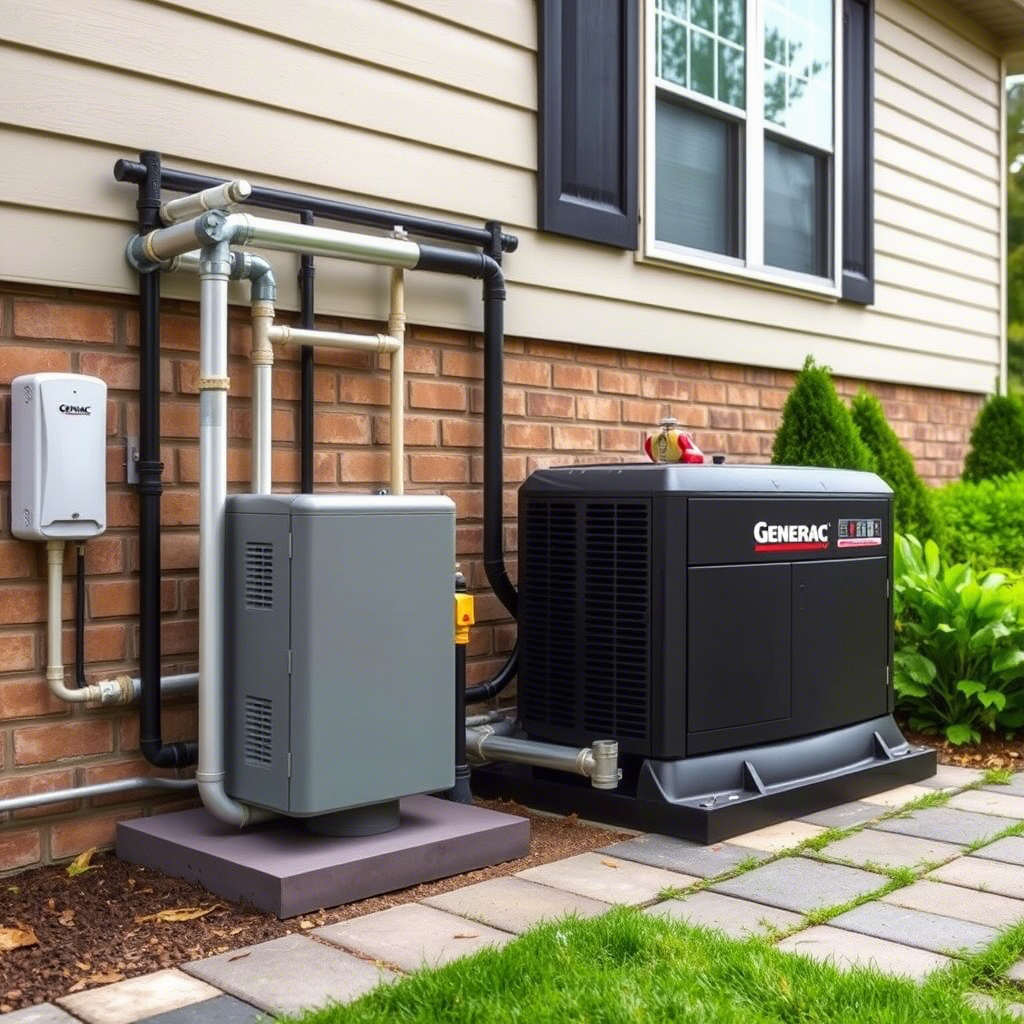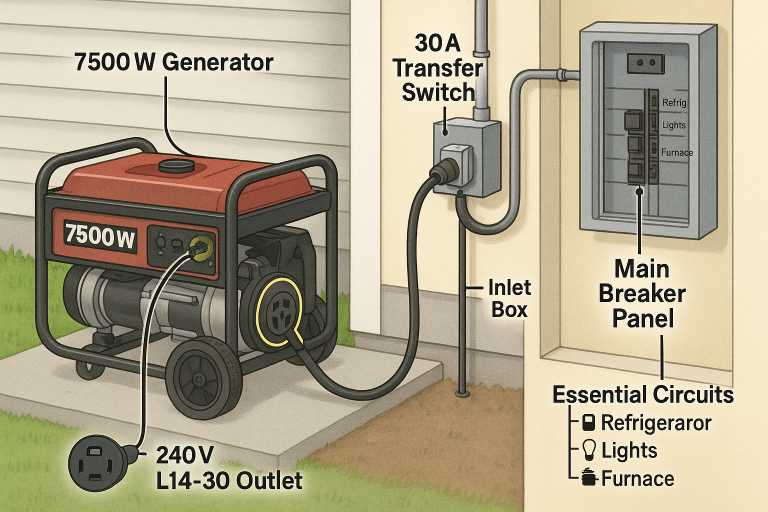How Generators Respond to Power Restoration
Generators play a crucial role in maintaining a reliable power supply, whether as a backup during outages or as a primary source in off-grid locations. Their functionality varies based on design, features, and settings. A key question many people ask is: What happens when utility power is restored? Does the generator turn off automatically, or is manual intervention required? The answer depends on the type of generator, its control system, and additional configurations.
How Generators Respond to Power Restoration
Automatic vs. Manual Shutdown
1. Automatic Shutdown with ATS
Many modern generators are equipped with an Automatic Transfer Switch (ATS), a device that constantly monitors utility power. If an outage occurs, the ATS signals the generator to start and shifts the electrical load to it. When the grid power is restored and deemed stable, the ATS reverses the transfer, sending power back to the grid and shutting down the generator. This seamless process offers benefits such as:
- Fuel Efficiency – Prevents unnecessary fuel consumption.
- Reduced Wear and Tear – Minimizes prolonged generator operation.
- Convenience – Eliminates the need for manual intervention.
Advanced ATS systems often incorporate time delays to confirm that the restored power is stable before transferring the load back, reducing the risk of frequent power toggling.
2. Manual Shutdown Procedures
In generators that lack an ATS, operators must manually turn off the generator when grid power returns. The process typically involves flipping a switch or pressing a button on the generator’s control panel. While effective, this method presents potential downsides:
- Delayed Response – Human intervention may not be immediate.
- Fuel Wastage – The generator might run longer than necessary.
- Risk of Overload – If reconnected to grid power improperly, electrical surges may occur.
Types of Generators and Their Shutdown Behaviors
1. Standby Generators
- Permanently installed and connected to a building’s electrical system.
- Typically equipped with an ATS for automatic start and shutdown.
- Commonly used in hospitals, data centers, and industrial facilities.
2. Portable Generators
- Require manual startup and shutdown.
- Often used for home backup power, construction sites, and outdoor activities.
- Must be properly disconnected from circuits before turning off.
3. Inverter Generators
- Designed for efficiency with variable speed engines.
- Usually manual but some have smart load management to regulate power output.
- Ideal for sensitive electronics due to cleaner energy output.
Advanced Generator Features for Efficient Power Management
1. Load Shedding and Gradual Transition
Modern generators incorporate load shedding, which helps regulate power distribution. When utility power returns, the generator gradually decreases its output instead of shutting off immediately. This prevents:
- Voltage Spikes – Protects sensitive equipment from power surges.
- Sudden System Shutoffs – Ensures uninterrupted operations in critical facilities.
2. Islanding and Microgrid Operation
Some generators support islanding, allowing them to operate independently from the main power grid. This is particularly useful for:
- Remote areas where grid reliability is low.
- Facilities that require uninterrupted power regardless of grid stability.
- Microgrids that integrate with renewable energy sources.
3. Synchronization and Parallel Operation
For large-scale industrial applications, multiple generators can be synchronized to share the electrical load. This:
- Improves fuel efficiency by optimizing generator use.
- Provides backup redundancy in case one generator fails.
- Allows facilities to operate in a controlled power environment even if some generators shut down.
Battery Backup and Hybrid Systems
In modern energy setups, generators often work alongside battery storage systems and solar panels to create a hybrid power system. Benefits include:
- Instantaneous Power Supply – A UPS (Uninterruptible Power Supply) can bridge the gap before the generator kicks in.
- Energy Savings – Batteries can store excess power from generators or renewables.
- Lower Carbon Footprint – Reduces dependence on fossil fuels.
Maintenance and Troubleshooting
To ensure generators function properly during outages and when transitioning back to grid power, routine maintenance is essential:
- Regular ATS Testing – Ensures automatic switching functions correctly.
- Fuel System Checks – Prevents clogging and stale fuel issues.
- Load Bank Testing – Verifies that the generator can handle full capacity when needed.
- Monitoring for Alarm Codes – Addresses potential system failures in advance.
Common issues that may arise include:
- ATS Failure – Prevents automatic switching and requires manual intervention.
- Delayed Shutdown – Could indicate sensor or control panel malfunctions.
- Power Surges on Reconnection – May be due to improper load balancing.
Regulatory and Safety Compliance
Generators must adhere to various regulatory standards to ensure safe operation. These include:
- NFPA 110 – Governs emergency power supply systems (EPSS) for essential facilities.
- OSHA Guidelines – Workplace safety requirements for generator use.
- National Electrical Code (NEC) – Covers safe installation practices.
- EPA Regulations – Addresses emissions compliance for diesel and gas generators.
Additionally, urban and commercial settings must comply with noise and fuel storage regulations, which may dictate:
- Maximum allowable noise levels for standby generators.
- Safe storage of diesel or propane fuel.
- Fire safety measures and ventilation requirements.
Cost and Efficiency Considerations
Different generator systems come with varying costs and efficiency levels:
- ATS-equipped generators tend to have a higher upfront cost but offer better automation and fuel savings.
- Manual generators are cheaper but require more operational oversight.
- Load-shedding and hybrid systems can reduce fuel consumption but may involve additional installation expenses.
Factors influencing costs:
- Fuel type (diesel, natural gas, propane, hybrid)
- Maintenance and service contracts
- Efficiency of load management systems
- Integration with renewable energy sources
Conclusion
The way a generator responds when utility power is restored depends on its design, automation level, and additional features.
- Generators with ATS shut down automatically, ensuring efficiency and convenience.
- Manual generators require operator intervention, making them less efficient.
- Advanced features like load shedding, islanding, and synchronization enhance generator performance and longevity.
- Battery backups and hybrid systems optimize power use while reducing costs.
Understanding these aspects helps in selecting the right generator for your needs, ensuring a seamless power transition and optimal performance. Proper maintenance and adherence to safety regulations further enhance generator reliability, making them a dependable solution for emergency and off-grid power needs.



